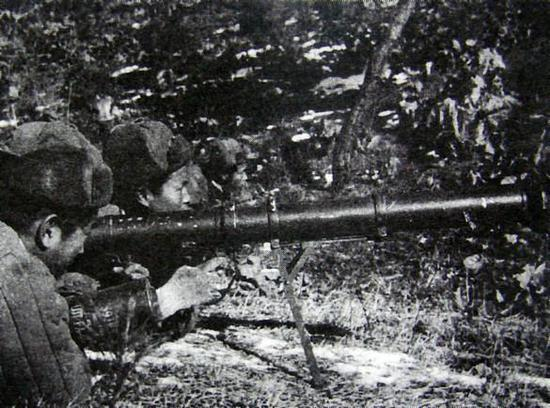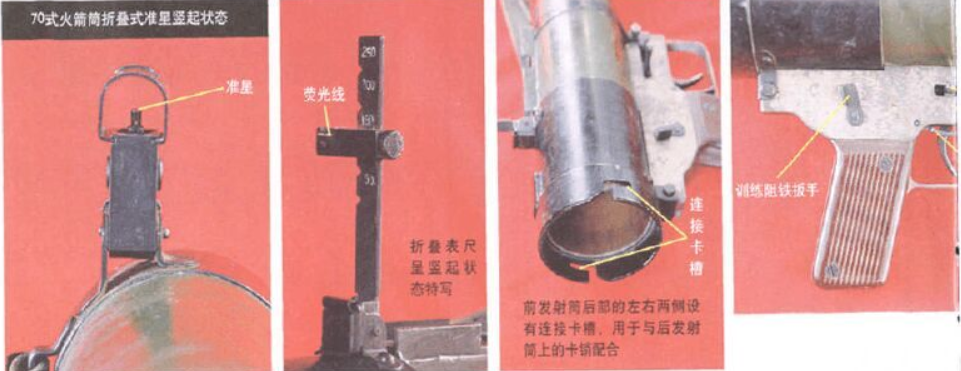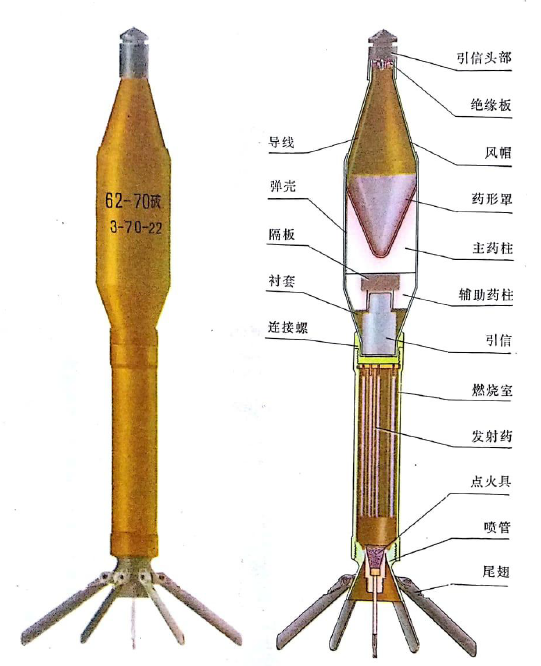The following is a brief history of the Chinese Type-70 Anti-tank Launcher, a weapon that was never effectively deployed in combat, falling in between other weapon platforms.
During World War 2, Chinese Military Command found out that the forward troops lacked infantry anti-tank weapons. This was around the time they were facing the Imperial Japanese army (which was mainly armed with light armored vehicles compared to the Europe front), but the problem didn’t get much attention.
After World War 2 (and the subsequent Chinese civil war), the newborn People’s Republic of China started to produce an imitation of foreign anti-tank weapon designs, almost all of which were copied from captured, U.S. made, recoilless guns and rocket launchers that were in use by Kuomintang. Two products that came from those captured items were known as the Type-52 75mm recoilless gun (which is the copy of the U.S. made M20 recoilless rifle), and Type-51 90mm anti-tank rocket launcher (the result of reverse engineering the U.S. made M20 “Super Bazooka”).

Type-51 90mm launcher
After receiving industrial support from USSR, the PLA started to reorganize their arsenal with fully Soviet-made weaponry. One of the items was the complete collection of the Soviet-made RPG-2 shoulder-fired, anti-tank launchers, which later became the Chinese made RPG-2 and was called the “Type-56 40mm Rocket Launcher”. Technically the RPG-2 wasn’t a rocket launcher since the warhead was not driven by a rocket booster, but the PLA still named it that way.
One issue was that the RPG-2 was a late 40s weapon design, and it became outdated quickly. The main problem being that the penetration of the HEAT warhead was no longer effective against the new generations of main battle tanks, and the effective range was too short.
After the China-Soviet split, the Soviets withdrew their engineering support in 1960. The main result was that China missed some of the newer innovations coming from their former “partners,” namely the latest Soviet anti-tank weapon–the legendary RPG-7.
Moving forward to the Vietnam war, in addition to being one of the primary weapon suppliers of the DRV, China was also seeking to capture new equipment, especially U.S. made weapons that had been recovered by the DRV. This included the M72 LAW. This portable, one-shot, lightweight launcher quickly caught the attention of the Chinese engineers: it was easy to use and carry, and every soldier could carry one without much impact. This weapon perfectly met the needs of the new mobile warfare doctrine of the PLA (at that time). Soon, after capturing an M72 LAW, Chinese engineers started the development of a new anti-tank launcher, was later called “62mm anti-tank rocket launcher type 1970” also known as just “Type-70”.

Type-70 China’s LAW
The new anti-tank launcher wasn’t a full M72 copy; it didn’t keep the same telescoping design which the M72 used; instead, it used a two-piece tube design (like the M20 super bazooka). The front tube is the launch tube (which could be used multiple times). The rear tube was a single use component (which carries a single rocket). The whole weapon system weighed 3.28kg (7.23lb), which was heavier than the M72 but still only half the weight of Type-56 RPG-2; still lightweight enough to deploy with infantry.
Both tubes were connected and locked by a rotary latch and all made of plastic impregnated fiberglass (same as the M72LAW). Close to the screw coupling, there was an aluminum reinforcement in the inner tube. The ammunition tube was encased with a bakelite cover and rubber sealing ring on both sides. A copper terminal jumper was set the inner side of the rear sealing cover forming a rudimentary safety–when the rear cover was still on the tube, it worked as a short circuit.

1-front seal cover 2-right copper conductive sheet 3-connection plug 4-rocket 5-electric ignition head 6-rear seal cover 7-fixing bolts 8-conductive plug 9-rocket position holder 10-blocker 11-conductive plug 12-short circuit insurance 13-left conductive copper sheet

Disassembled Type-70 and Munition
The HEAT rocket used by Type-70 is very similar to LAW; both of them had the same form factor, and both were fin stabilized with no self-rotation when firing. One significant difference between the Type-70 rocket and LAW rocket is the Type-70 replaced the original M412 fuze with a piezoelectric fuse (D-1J).
The D-1J fuze had the advantage of a small size, reliable and had high sensitivity. It also had some disadvantages such as no self-destruction mechanism, and it would unreliably detonate when deployed against a sloped target. Another more critical problem was the susceptibility of the fuze to induced electric fields from a high voltage power supply as it could cause premature detonation.
The Type-70 had an effective range of 200 meters. To support the range, the rear sight’s reticle was graduated in 50-meter range increments from 50m to 250m. The maximum range of the rocket was about 800 meters. The warhead was capable of penetrating 345mm (about 13.5 inches) of armor.

1.front sight 2.illuminating line 3.connection latch 4.training mode switcher (when it’s in training mode the training sear will stop the launcher from igniting the rocket engine as a way to save the service life of Piezoelectric crystal)

A look at the Type-70 rocket

Layout of Type-70 rocket

one of the collector’s collection of Type-70 rocket and the ammunition encase
In addition to the conventional HEAT rocket, Chinese engineers also developed a special type of ammunition; a type of airburst anti-personnel round. After the warhead hit the ground, it would bounce back into the air and detonate. This anti-personnel ammunition later was adapted to the RPG-7 platform (called Type-69 Air Burst Steel Ball Rocket).

Type-69 Air Burst
Only a limited number of Type-70 were adopted by the Chinese Army. It took too long to develop and suffered from a lack of manufacturing ability and quality control. The Type-70 (and a slightly improved version Type-70-1) didn’t work as well as intended; garnering complaints of too short of an effective range and some defects in production which sometimes resulted in duds or non-firing units.

A soldier aiming with Type-70
Chinese Engineers created a domestic copy of RPG-7 (that they named the Type-69) and started massive production effort. Coupled with the following adoption of the 82mm recoilless rifle, the Type-70, as a weapon simply born in the wrong time, quickly finished its short duty.
Chinese Engineers didn’t abandon the Type-70 completely, however. Based on the Type-70 they designed the FHJ-84, a twin-barrel incendiary rocket launcher, which used the same 62mm caliber and reloading mechanism. Given the limitations of the ancestor platform, the FHJ-84 is mainly used to fire smoke and incendiary rockets as a supplement to short-range flamethrowers.

FHJ-84
Nowadays, the PLA has outfitted troops with the PF89 80mm launcher that fires the DJZ08 Multi-Purpose breaching rocket. The venerable Type-70, as a first of it’s kind in China, has been phased out and will likely be soon forgotten.
 Your Privacy Choices
Your Privacy Choices
